How to Create a Gravel Garden, an Eco-Friendly Landscaping System That Requires Minimal Water
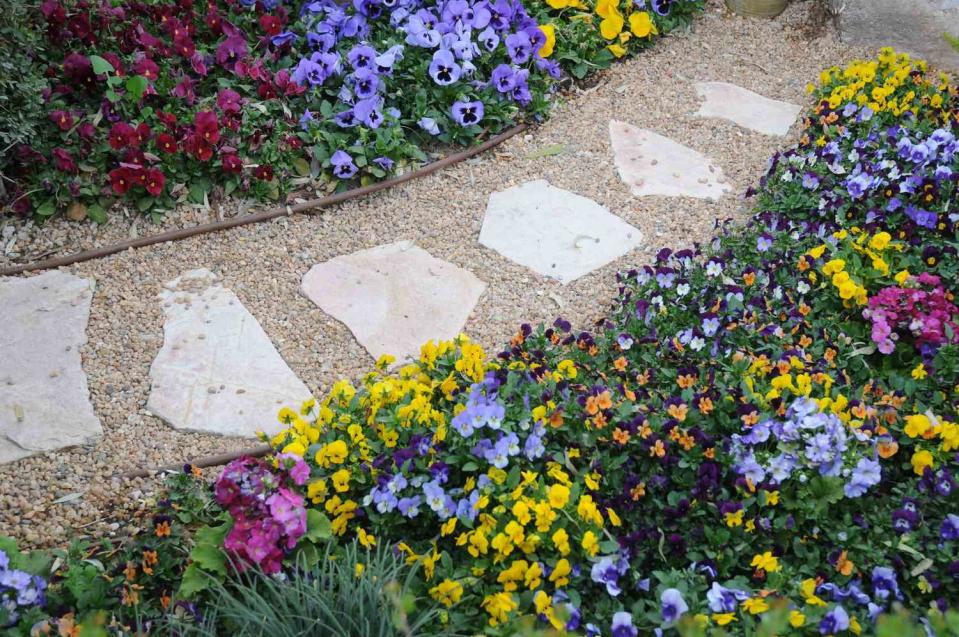
amite / Getty Images
TABLE OF CONTENTS
-
On This Page
If you want to start a garden, but you don’t have time to tend to one, turn to a system that’s been growing in popularity for its eco-friendly and low maintenance reputation: gravel gardens. It’s a form of xeric gardening—planting with water conservation in mind—that uses small pebbles in place of soil amendments and mulch.
While it may seem like you need a green thumb to be able to grow plant matter in rocks, even beginners can start a gravel garden. Best of all, the environment you’ll create is highly attractive for perennials, bulbs, grasses, and other types of native plants.

Courtesy of Jeff Epping
Related: 12 Ground Cover Plants That Will Fill in the Negative Space in Your Garden
What Is a Gravel Garden?
As the name implies, a gravel garden is an area of land where mostly native plants grow in a bordered section of gravel. A sustainable alternative to some other gardening systems, gravel gardens require about 80{a57a8b399caa4911091be19c47013a92763fdea5dcb0fe03ef6810df8f2f239d} less maintenance than a typical perennial garden. “When we create these, we want to create a garden that will be good on its own without the input of additional water, fertilizer, and other chemicals that you would use to protect your plants,” says Jeff Epping, director of horticulture at Olbrich Botanical Gardens.
Their ability to flourish with very little water and zero soil amendments also means you don’t need to worry about weed growth. “A lot of weeds that we experience thrive in very rich, moist soils,” Epping says. The dry environment of a gravel garden means weed seeds don’t have what they need to germinate, grow, and thrive.
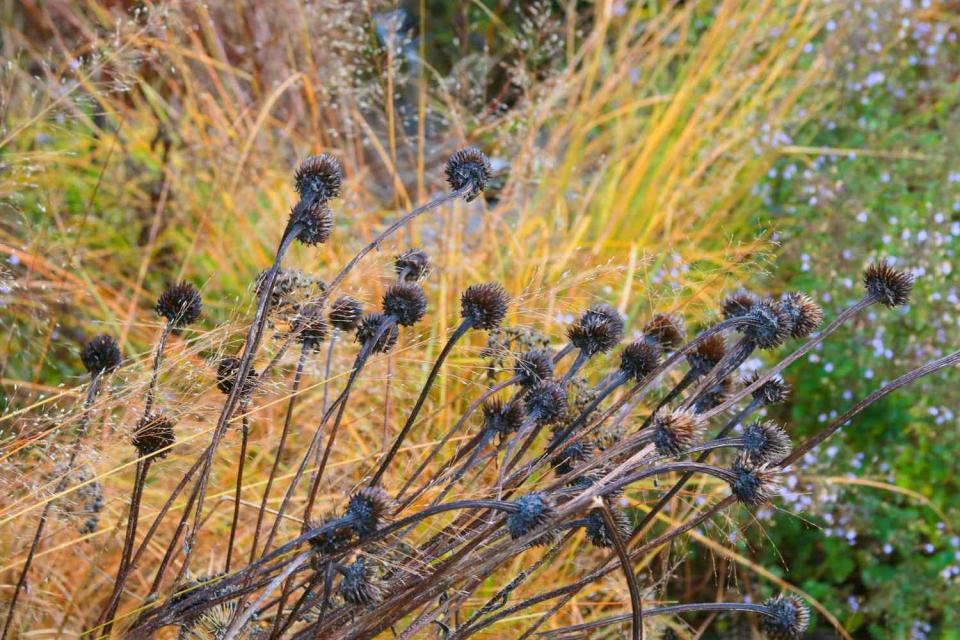
Courtesy of Jeff Epping
How to Create a Gravel Garden
Anyone can create a gravel garden, but they’re especially ideal for people who have a hard time keeping plants alive due to harsh growing conditions, like dry soil and full sun. And of course, they’re perfect for anyone looking for a relatively hands-off approach to gardening.
Does this sound like the right fit for you and your home? If so, we recommend starting your gravel garden in the spring, which is the best time to plant and establish greenery. “Start out small and see how it goes for you if you don’t want to jump in full force,” Epping says.
Find the Right Location
Like many gardening projects, you’ll need to be thoughtful about where you place your gravel garden. It can be as simple as a small plot of land in your backyard—or you can make one that takes over your entire landscape. “They’re great for areas that may already be experiencing conditions that make them hot and dry,” says Josh Williams, garden manager at Paul J. Ciener Botanical Garden. An area that receives full sun is ideal.
Also consider the type of soil you’re working with—soils that are harder to grow in (think too rocky or harder clay) would work well for a gravel garden. No matter your dirt’s composition, a successful gravel garden should always have well-drained soil.
Prepare Your Yard
One of the best parts of growing a gravel garden is that you can use your existing soil. But if your soil is covered by grass, you’ll need to start by removing it. “You can do it mechanically and strip it off with a sod cutter,” Epping says. Other options include covering turf with black plastic for a yea or spraying with herbicides to kill the grass. “After applying the herbicide, mow your grass really short and it should die off,” Epping adds.
Create a Border
Making a border is one of the most crucial steps when creating your own gravel garden. “If we don’t have something to retain the edge, the gravel will just taper right off. It’ll go from 4 to 5 inches to 3 to 2 to 1 to nothing,” Epping says. “Then, those edges will be open to weed invasion because they won’t have that thick layer of gravel to keep the weed seed from getting a foothold to germinate and grow.”
You can make your border with just about any common building materials. Rocks, boulders, metal edging, bricks, pavers, poured concrete, and even treated wood all work. Just make sure the border covers all edges of your gravel garden.
Lay Your Gravel
The type of gravel you use is another key component to a successful gravel garden. “The gravel should be washed and small, anywhere from 1/4 inch to 3/16 inch,” says Lisa Roper, horticulturist at Chanticleer. Washed simply means that the gravel has been cleaned of any dirt and debris so it looks nice when you use it to fill your landscape. “Pea gravel is rounded and looks good in a blend of mixed colors. Sharp gravel made of granite or quartz also works well,” Roper says.
After selecting your gravel, use it to fill in your border. Spread the gravel out evenly to a depth of about 4 to 5 inches. “Think of marbles in a jar, where you always have the airspace in between all of the marbles,” Epping says.
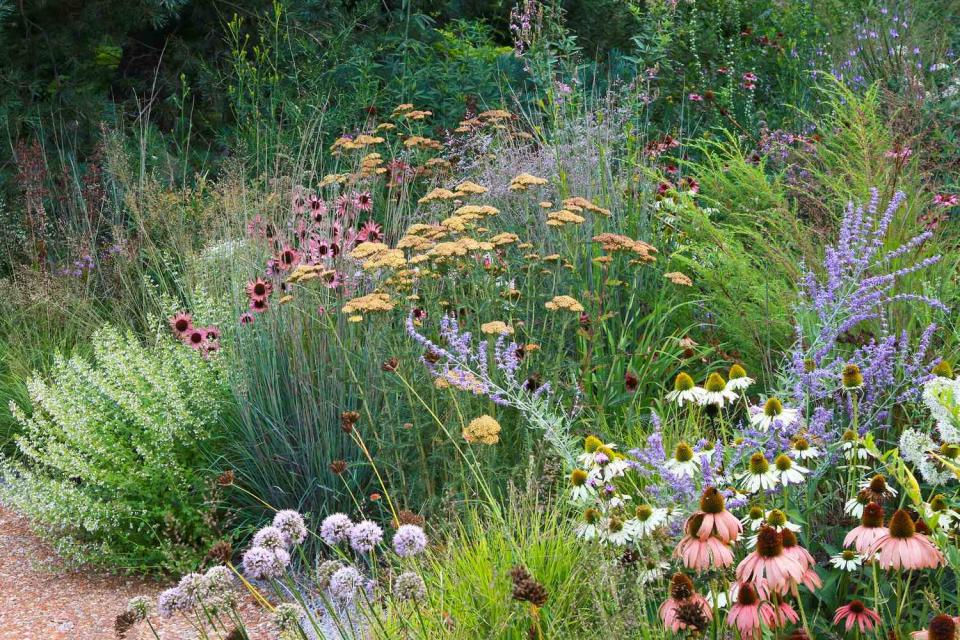
Courtesy of Jeff Epping
Related: Virtually Meander Along the Pathways of Martha’s Perennial Garden, a Landscape of Delights
How to Add Plants to a Gravel Garden
Now it’s time for the part you’ve been waiting for—putting in your plants into the gravel. For this, you’ll want to use drought-tolerant native plants with deep root systems. You shouldn’t plant seeds in a gravel garden, since it’s harder for the roots to establish.
“When we plant, we typically use 3.5 or 4.5 inch pot size perennials, because they’re about the correct depth,” says Epping. “If you use a gallon pot, they’re actually too big and you have to end up shaving off some soil to get them in.”
-
Lay out your potted plants in the areas you want them to grow, keeping each about 12 to 18 inches apart.
-
Remove the plant from the pot and hover it over a bushel basket.
-
Over the basket, peel off the top inch of soil to remove any weed seeds from the nursery before planting.
-
Dig about 4 to 5 inches deep, past the gravel and into the soil, and insert the root ball.
-
Fill the area back in with soil and gravel. The gravel should touch the crown of the plant (where the stem meets the roots).
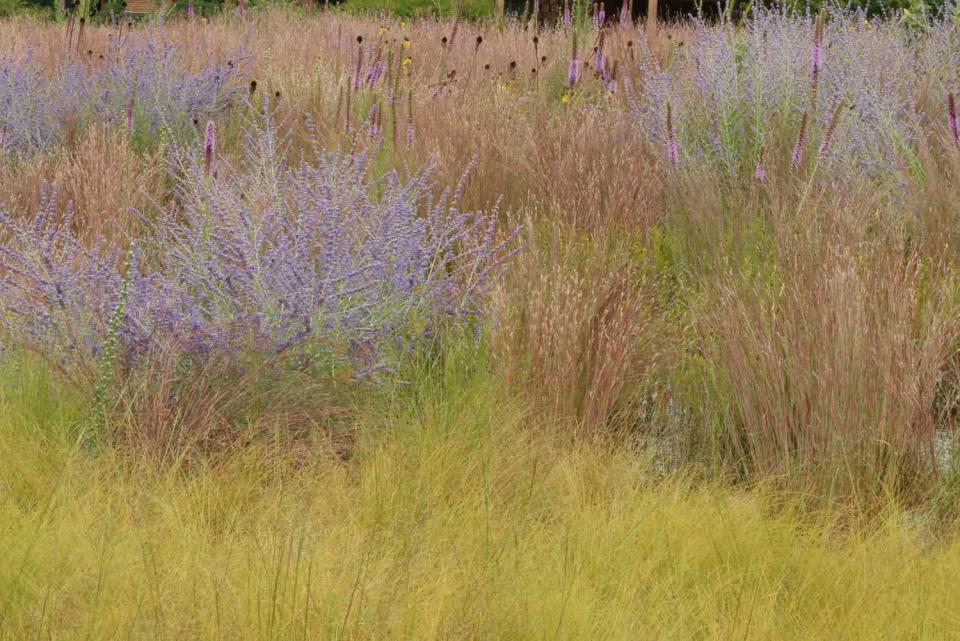
Courtesy of Jeff Epping
Types of Plants to Grow in a Gravel Garden
Many different types of plants can grow in a gravel garden, including bulbs, perennials, and grasses. Since gravel gardens are meant to thrive with little water, look for plants that are drought tolerant. Also choose varieties that have deep root systems, which can pull moisture from all levels of the soil.
When in doubt, opt for native plants, which are often drought tolerant and attract pollinators, like bees and butterflies. “The best plants for gravel gardens often are our very own native prairie plants because they are very drought tolerant by nature and have deep root systems,” Epping affirms.
Prairie Dropseed (Sporobolus heterolepis)
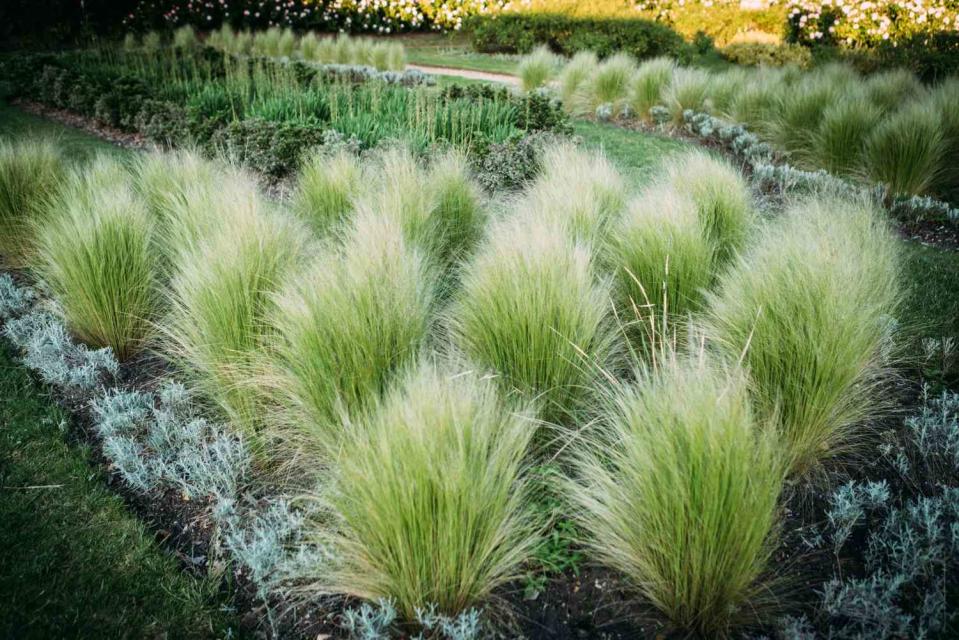
Little Bluestem (Schizachyrium Scoparium)
-
Type: Perennial grass
-
Zones: 3 to 9
-
Dimensions: 2 to 4 feet tall, 18 to 24 inches wide
-
Growing conditions: Full sun; dry to medium, well-drained soil
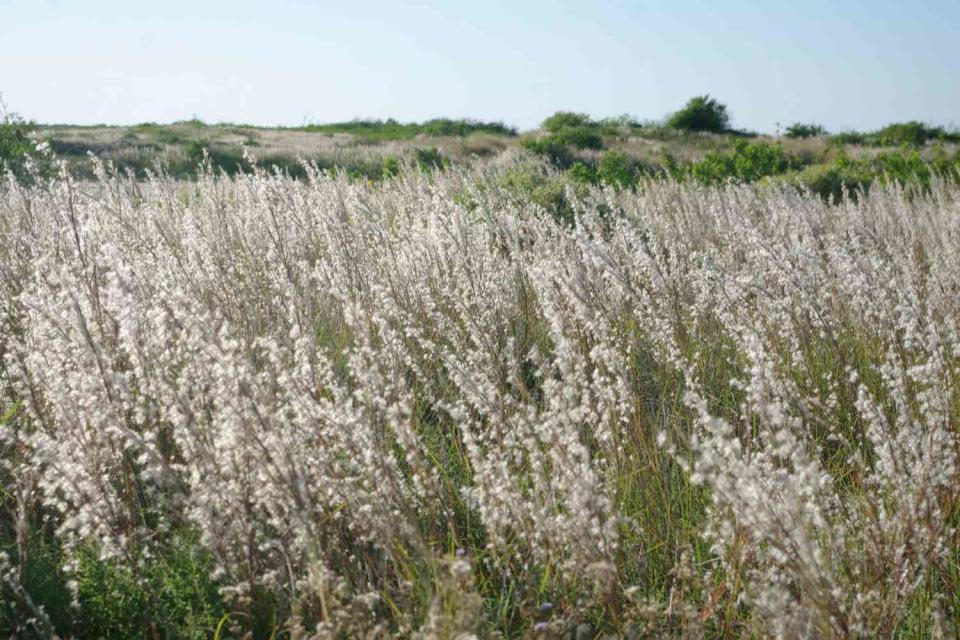
Purple Sensation (Allium Hollandicum)
-
Type: Ornamental onion
-
Zones: 3 to 8
-
Dimensions: 2 to 3 feet tall, 1 to 2 feet wide
-
Growing conditions: Full sun; dry to medium, well-drained soil
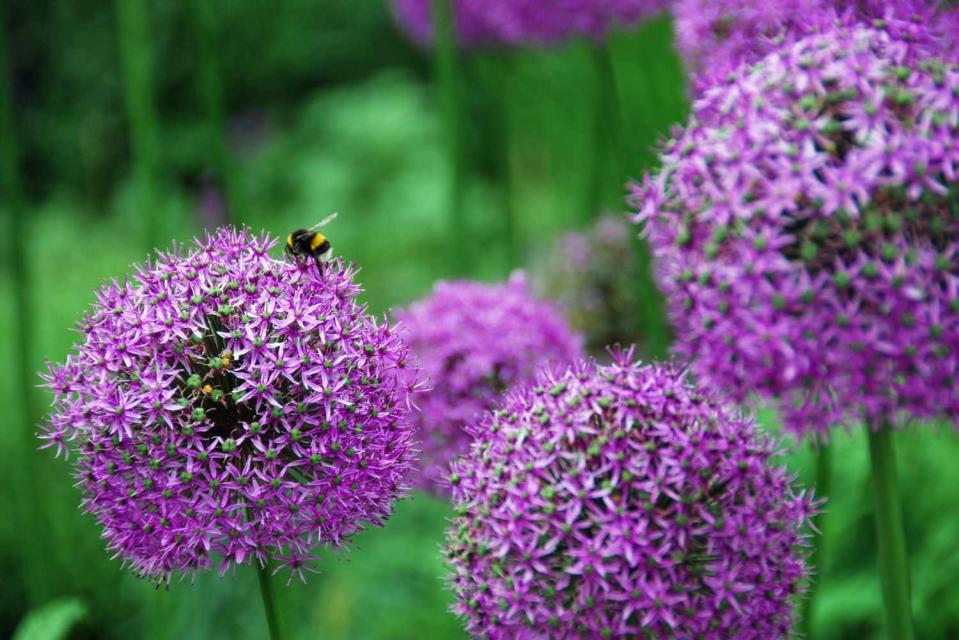
Autumn Joy (Sedum Herbstfreude)
-
Type: Herbaceous perennial
-
Zones: 3 to 9
-
Dimensions: 1 to 2 feet tall and wide
-
Growing conditions: Full sun; dry to medium, well-drained soil
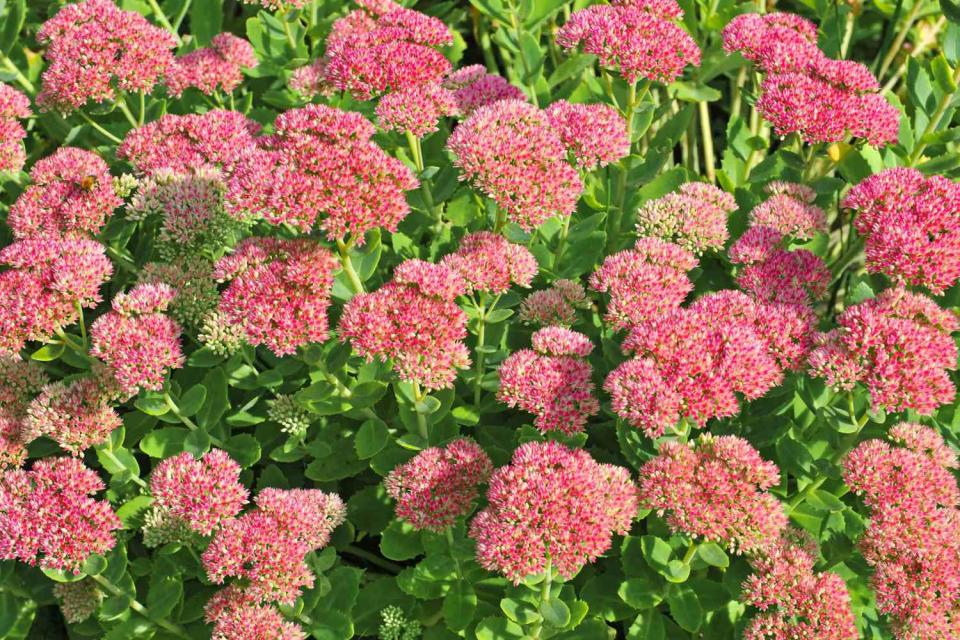
Pale Purple Coneflower (Echinacea Pallida)
-
Type: Herbaceous perennial
-
Zones: 3 to 9
-
Dimensions: 2 to 3 feet tall, 12 to 18 inches wide
-
Growing conditions: Full sun to partial shade; dry to medium, well-drained soil
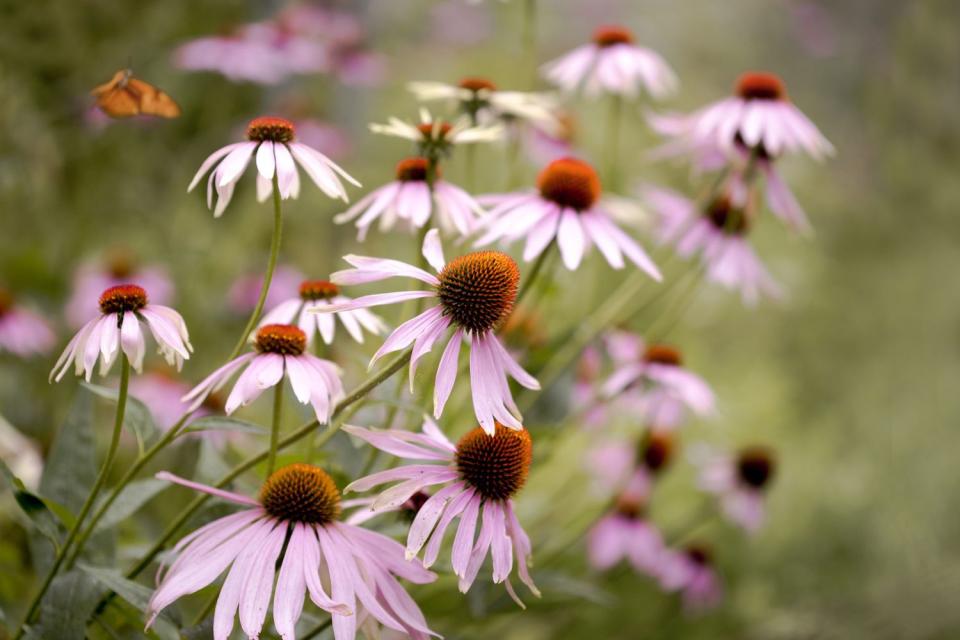
Black-Eyed Susan (Rudbeckia Hirta)
-
Type: Herbaceous perennial
-
Zones: 3 to 9
-
Dimensions: 2 to 3 feet tall, 1 to 3 feet wide
-
Growing conditions: Full sun; dry to medium, well-drained soil
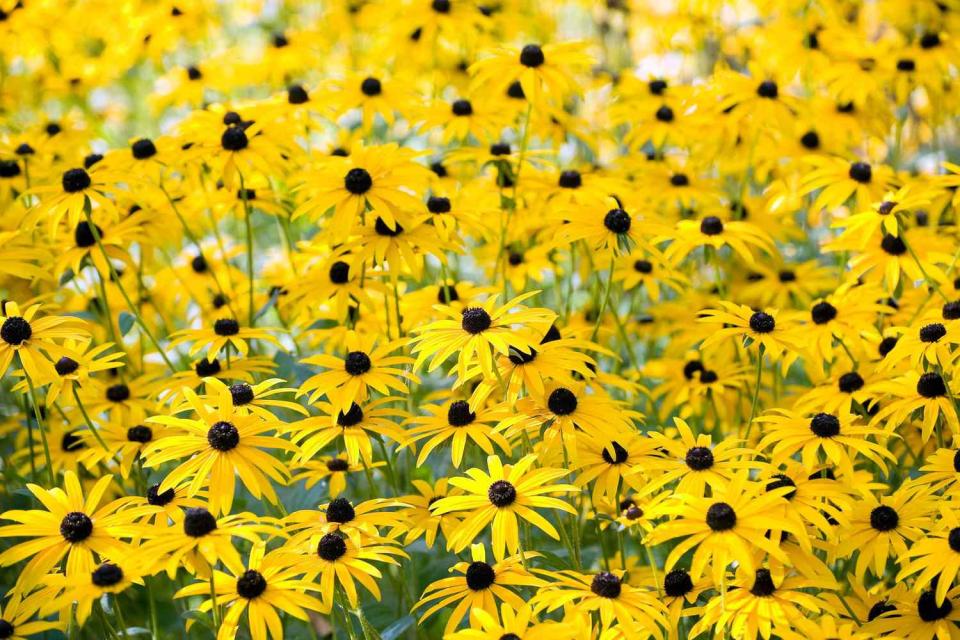
English Lavender (Lavandula Angustifolia)
-
Type: Herbaceous perennial
-
Zones: 5 to 8
-
Dimensions: 2 to 3 feet tall, 2 to 4 feet wide
-
Growing conditions: Full sun; dry to medium, well-drained soil
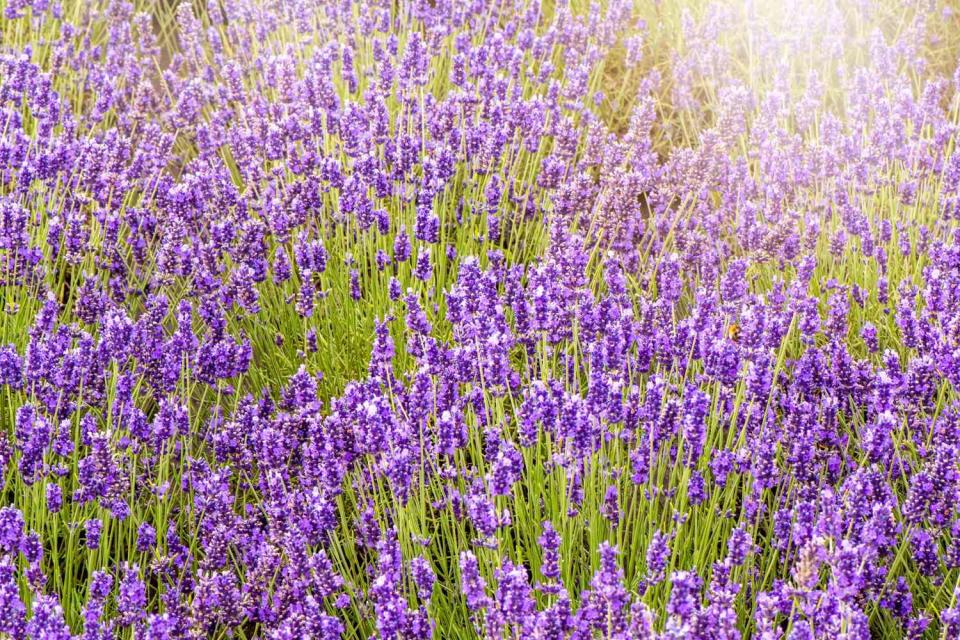
October Skies (Aster Oblongifolium)
-
Type: Herbaceous perennial
-
Zones: 3 to 8
-
Dimensions: 18 to 24 inches tall, 20 to 24 inches wide
-
Growing conditions: Full sun; dry to medium, well-drained soil

Eastern Beebalm (Monarda Bradburiana)
-
Type: Herbaceous Perennial
-
Zone: 5 to 8
-
Dimensions: 18 to 24 inches tall and wide
-
Growing conditions: Full sun to partial shade; dry to medium, well-drained soil
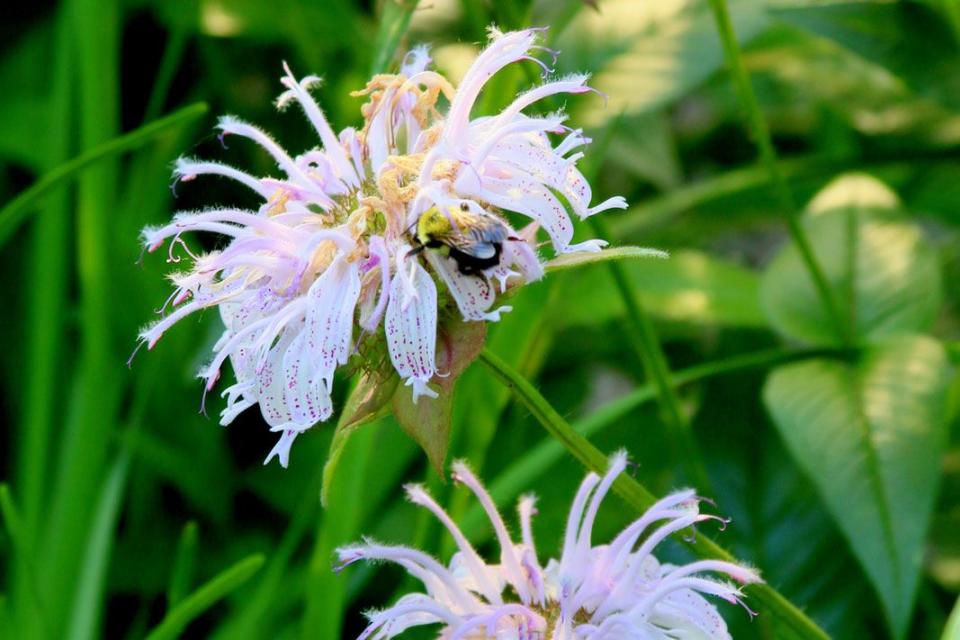
February Gold (Cyclamineus Daffodil)
-
Type: Bulb
-
Zones: 4 to 8
-
Dimensions: 1 to 1.5 feet tall, 3/4 to 1 feet wide
-
Growing conditions: Full sun to partial shade; dry to medium, well-drained soil

Gravel Garden Care
While the overarching goal of a gravel garden is to make it relatively low maintenance, extra nurturing is required when you’re starting out to help plants get established. After that, some simple annual care is all you’ll need to provide.
Light
As mentioned, you’ll need to establish your gravel garden in an area with full sunlight. This is largely because full sun is what most drought tolerant plants need to thrive. Additionally, the heat helps the soil stay relatively dry.
Another reason why you want to avoid shade? Leaves and other debris can fall from the trees and into the gravel, which can cause issues in your garden. “Any leaves that fall have actually then infiltrated the gravel. It becomes more like a soil [when it is] mixed in with the gravel—and that’s not good,” Epping says.
Water
Over time, your gravel garden will require less and less water. Eventually, you’ll only need to water it when your plants show signs of thirst. When you first start gravel gardening, however, you’ll need to water frequently until the plant are established. “The roots will need to find their way from the gravel to the soil,” says Roper. “Watering should be done regularly, every day for the first few weeks and then less often that first season depending on the weather.”
Annual Clean Up
Once your plants are established, the most maintenance you’ll have to perform is cleaning it up in the spring. “The enemy of the system is to let organic matter build up in the gravel,” Epping says. If you avoided cleaning your garden for about three years, for example, the organic matter will create a compost or soil in the gravel.
To clean up your garden, cut the perennials back about six inches and remove all the excess plant matter from the gravel. Then, go in with a blower and blow any debris out of the garden to get the rocks nice and clean. “Once that is done, you’re done for the season,” Epping says. “That’s the beauty of it. We don’t have to mulch them like we do with our normal beds, we don’t have to edge them like a lawn—all we do is just watch the plants grow.”
